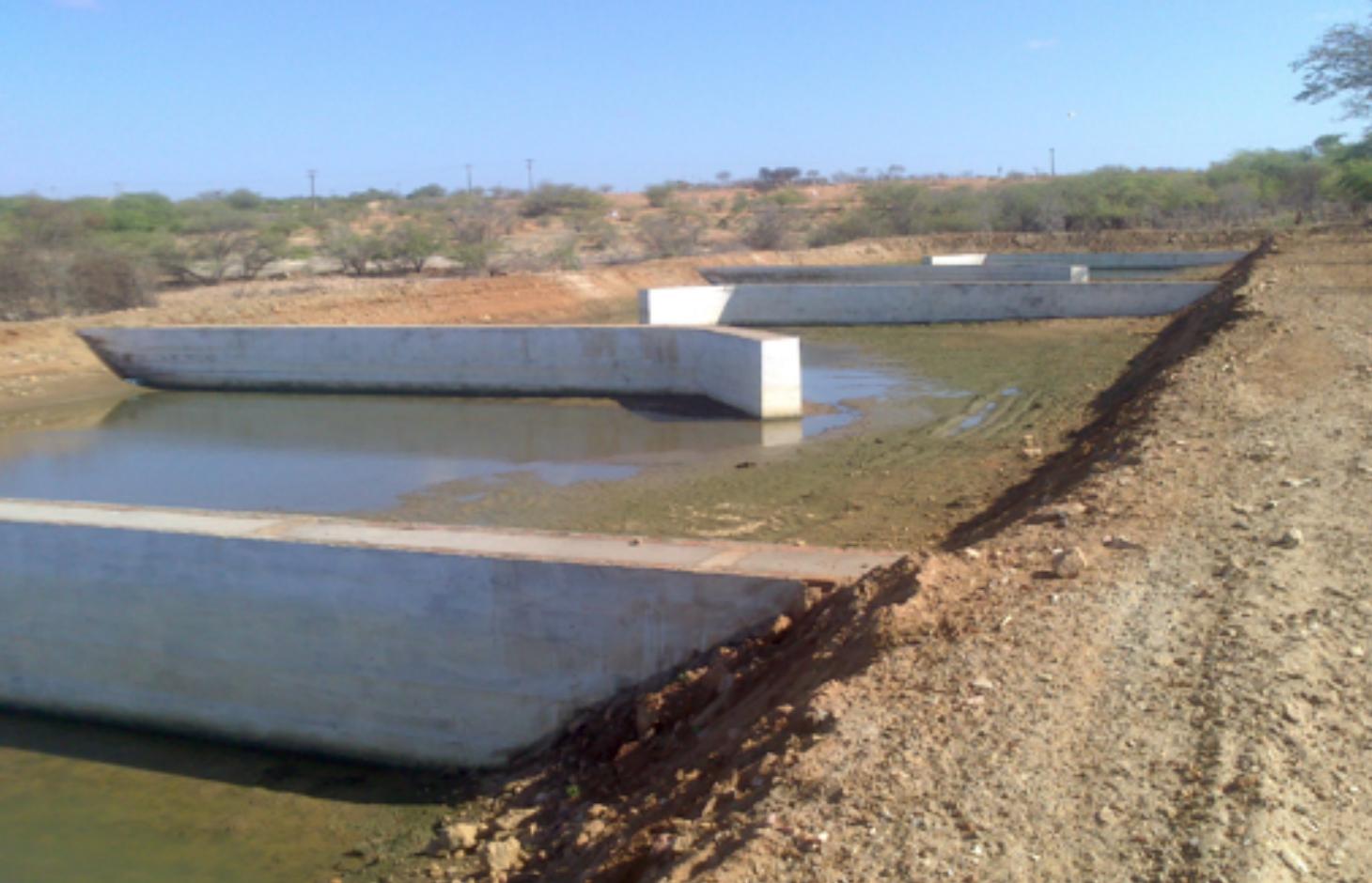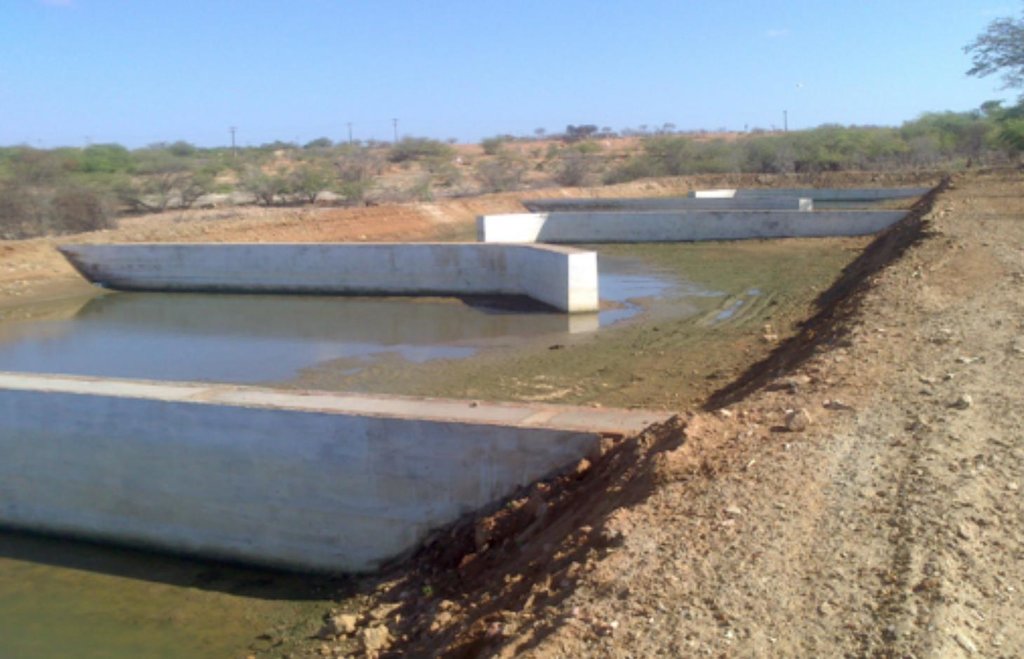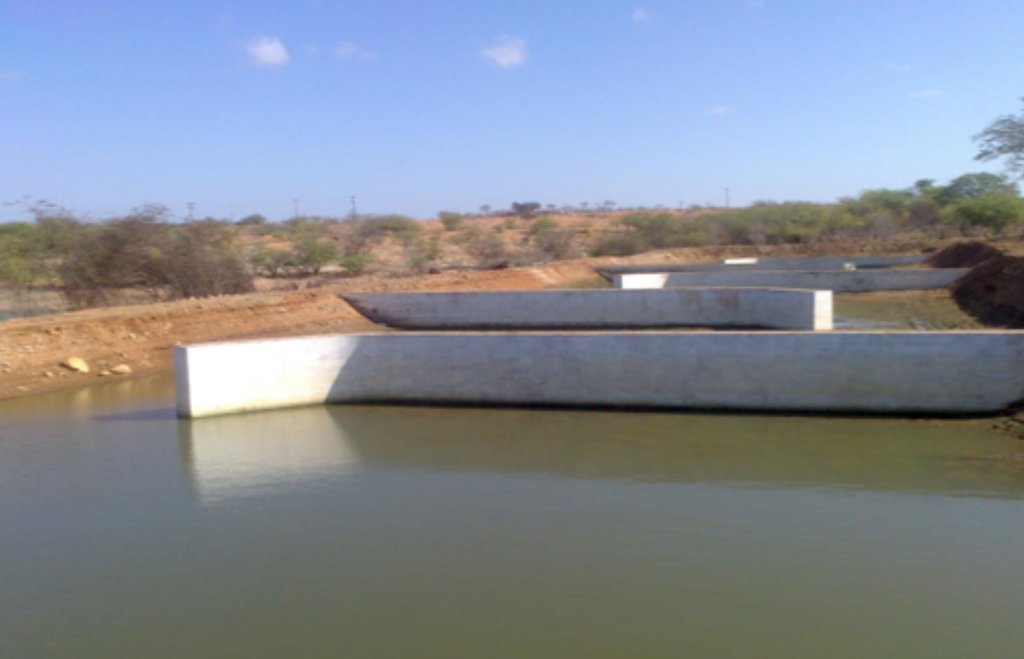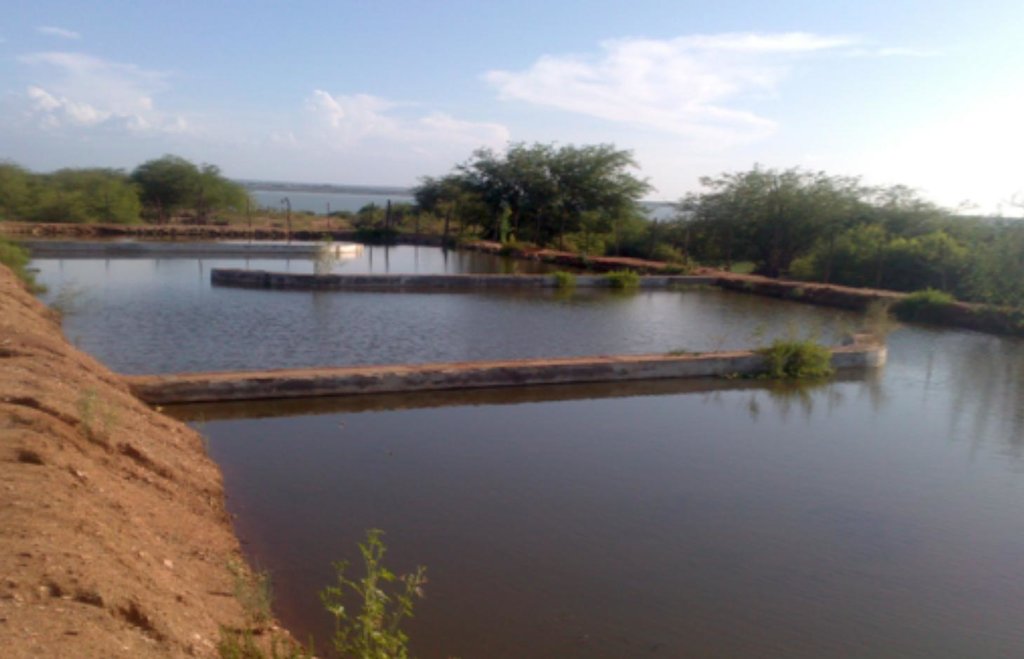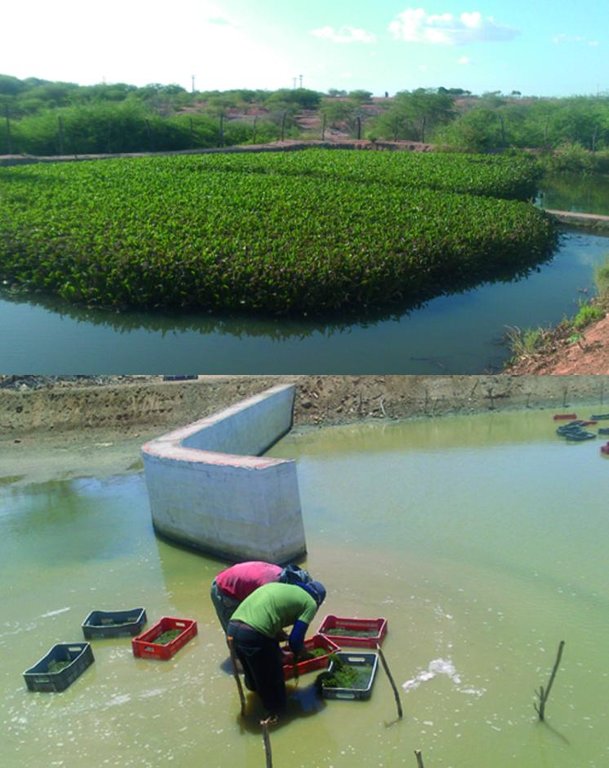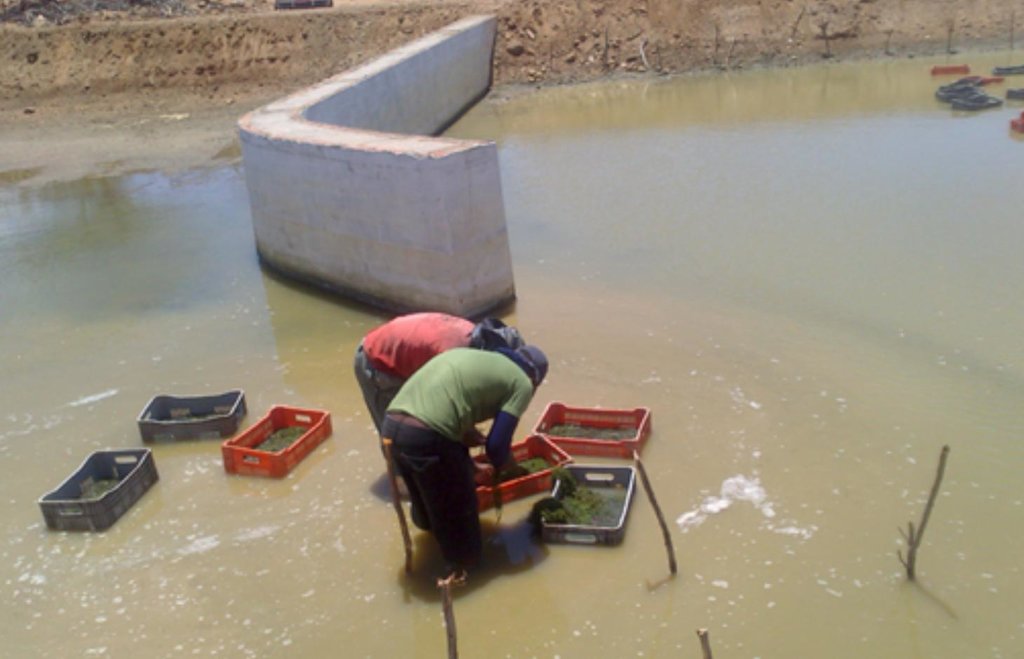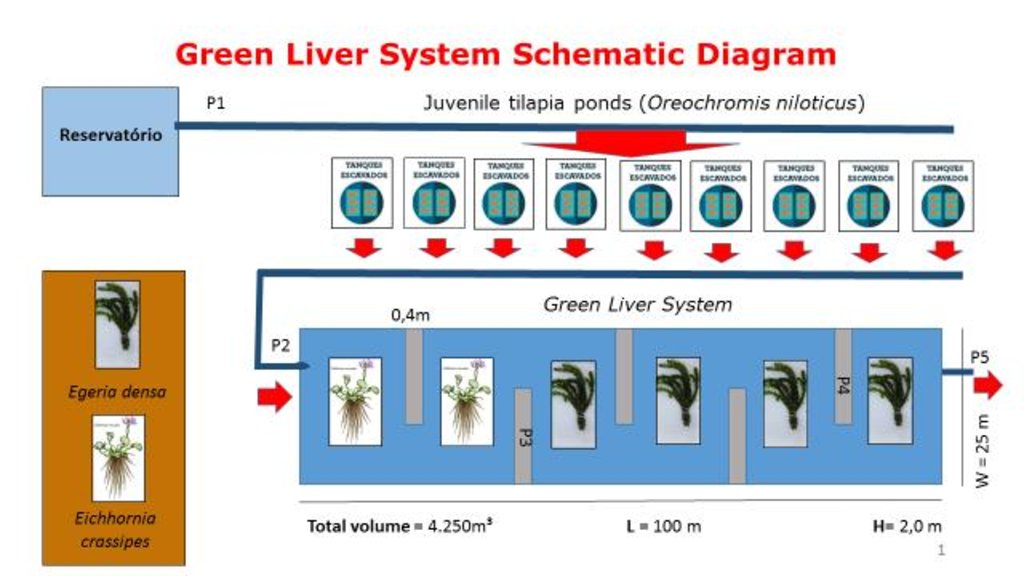The “Green Liver System”: eco-friendly water purification [ប្រទេសប្រេស៊ីល]
- ការបង្កើត៖
- បច្ចុប្បន្នភាព
- អ្នកចងក្រង៖ Marianna Siegmund-Schultze
- អ្នកកែសម្រួល៖ –
- អ្នកត្រួតពិនិត្យច្រើនទៀត៖ Fabian Ottiger, Alexandra Gavilano
Fitorremediação (Portuguese)
technologies_1710 - ប្រទេសប្រេស៊ីល
- សង្ខេបជា PDF
- សេចក្តីសង្ខេបពេញលេញជាទម្រង់ PDF សម្រាប់បោះពុម្ព
- សេចក្តីសង្ខេបពេញលេញទម្រង់អ៊ីនធឺនេត
- សេចក្តីសង្ខេបពេញលេញ (មិនមានទម្រង់ជាក់លាក់)
- The “Green Liver System”: eco-friendly water purification : 7 ខែ មិនា ឆ្នាំ 2019 (public)
- The “Green Liver System”: eco-friendly water purification : 29 ខែ មេសា ឆ្នាំ 2017 (inactive)
- The “Green Liver System”: eco-friendly water purification : 20 ខែ មិនា ឆ្នាំ 2017 (inactive)
- The “Green Liver System”: eco-friendly water purification: 8 ខែ មិនា ឆ្នាំ 2017 (inactive)
- The “Green Liver System”: eco-friendly water purification: 7 ខែ មិនា ឆ្នាំ 2017 (inactive)
ពិនិត្យមើលគ្រប់ផ្នែក
ពង្រីកមើលទាំងអស់ បង្រួមទាំងអស់1. ព័ត៌មានទូទៅ
1.2 ព័ត៌មានលម្អិតពីបុគ្គលសំខាន់ៗ និងស្ថាប័នដែលចូលរួមក្នុងការវាយតម្លៃ និងចងក្រងឯកសារនៃបច្ចេកទេស
អ្នកជំនាញឯកទេស SLM:
អ្នកជំនាញឯកទេស SLM:
ឈ្មោះគម្រោងដែលបានចងក្រងឯកសារ/ វាយតម្លៃលើបច្ចេកទេស (បើទាក់ទង)
Book project: Making sense of research for sustainable land management (GLUES)ឈ្មោះអង្គភាពមួយ (ច្រើន) ដែលបានចងក្រងឯកសារ/ វាយតម្លៃបច្ចេកទេស (បើទាក់ទង)
Leibniz-Institut für Gewässerökologie und Binnenfischerei (IGB) - ប្រទេសអាល្លឺម៉ង់ឈ្មោះអង្គភាពមួយ (ច្រើន) ដែលបានចងក្រងឯកសារ/ វាយតម្លៃបច្ចេកទេស (បើទាក់ទង)
Potsdam-Institut für Klimaforschung (PIK) - ប្រទេសអាល្លឺម៉ង់ឈ្មោះអង្គភាពមួយ (ច្រើន) ដែលបានចងក្រងឯកសារ/ វាយតម្លៃបច្ចេកទេស (បើទាក់ទង)
Universität Hohenheim - ប្រទេសអាល្លឺម៉ង់ឈ្មោះអង្គភាពមួយ (ច្រើន) ដែលបានចងក្រងឯកសារ/ វាយតម្លៃបច្ចេកទេស (បើទាក់ទង)
Technische Universität Berlin (Technische Universität Berlin) - ប្រទេសអាល្លឺម៉ង់ឈ្មោះអង្គភាពមួយ (ច្រើន) ដែលបានចងក្រងឯកសារ/ វាយតម្លៃបច្ចេកទេស (បើទាក់ទង)
Hochschule für Technik und Wirtschaft Dresden (HTW Dresden) - ប្រទេសអាល្លឺម៉ង់1.3 លក្ខខណ្ឌទាក់ទងទៅនឹងការប្រើប្រាស់ទិន្នន័យដែលបានចងក្រងតាមរយៈ វ៉ូខេត
អ្នកចងក្រង និង(បុគ្គលសំខាន់ៗ)យល់ព្រមទទួលយកនូវលក្ខខណ្ឌនានាទាក់ទងទៅនឹងការប្រើប្រាស់ទិន្នន័យដែលបានចងក្រងតាមរយៈវ៉ូខេត:
បាទ/ចា៎
2. ការពណ៌នាពីបច្ចេកទេស SLM
2.1 ការពណ៌នាដោយសង្ខេបពីបច្ចេកទេស
និយមន័យបច្ចេកទេស:
Water purification using macrophytes to treat effluent from fish farming.
2.2 ការពណ៌នាលម្អិតពីបច្ចេកទេស
ការពណ៌នា:
The “Green Liver System” uses aquatic plants, established in artificial wetlands, to remove, transfer, stabilize or eliminate pollutants in wastewater from fish farms. The use of large quantities of feed in aquaculture, along with the application of antibiotics, hormones and probiotics, has negative impacts on aquatic ecosystems due to the introduction of nitrogen, phosphorous and drug residues into the system. The Green Liver System is a form of phytoremediation (phyto = plant and remediate = correct) that uses a range of plants to decompose, extract, or hold contaminants present in soils and waters. This technology has been considered as an innovative alternative and a low cost option compared to others used in contaminated sites - like membrane bioreactors, upflow anaerobic sludge blanket (UASB), and others.
The plants selected for use in Green Liver System artificial wetlands depend on the pollutant to be removed. Research shows physiological differences between species, which need to be taken into account when planning wastewater treatments. Ideal plants for phytoremediation need: a) a fast growth rate; b) high biomass production; c) long rooting systems; d) easy maintenance/pruning; e) to be able to persists, and f) to have the ability to store trace metals within specific parts which can be later removed.
The Green Liver System uses aquatic macrophytes, which extract contaminants from the water, store them, or even metabolize them - transforming them into less toxic or harmless products. In the case of Eichhornia crassipes, most of the solids in suspension are removed by sedimentation or by adsorption in the root system. The dense coverage of these plants reduces the mixing effect of the wind, as well as minimizing thermal mixture. Shading by the plants restricts algal growth and the root system prevents horizontal movement of particulate material. In this way, particles are removed from the wastewater and microorganisms associated with the plants’ rhizosphere slowly decompose. Many organisms can be used in biodegradation: these include bacteria and fungi as well as plants, and the efficiency of one or the other depend, in many cases, on the molecule structure and of the presence of enzymes that are effective in degrading the pollutant.
The fish farm used as an example here is located on the margins of the Itaparica reservoir in Brazil. There are dozens of excavated tanks used to produce tilapia (Oreochromis niloticus) and “tambaqui” (Colossoma macropomum) fingerlings and juvenile fish. As well as these tanks, there are many net enclosures installed in the reservoir where the fishes are reared to maturity. Part of the wastewater from the excavated tanks is released into a stabilization lagoon, and the remainder goes to the Green Liver System. The effluent is enriched with spare feed, and excreta from the fish, which includes drug residues. If not treated, this may cause eutrophication because of its mineral richness. The Green Liver System consists of an excavated tank of 100m x 20m x 2m in size. The tank is subdivided into six parts: two planted to Eichhornia crassipes and four to Egeria densa. A mesh barrier stops fish from being flushed into the tank. Regular monitoring of the physical, chemical and biological parameters is required to control environmental fluctuations.
2.3 រូបភាពនៃបច្ចេកទេស
2.5 ប្រទេស/តំបន់/ទីតាំងកន្លែង ដែលបច្ចេកទេសត្រូវបានអនុវត្ត និងបានគ្រប់ដណ្តប់ដោយការវាយតម្លៃនេះ
ប្រទេស:
ប្រទេសប្រេស៊ីល
តំបន់/រដ្ឋ/ខេត្ត:
Pernambuco
បញ្ជាក់បន្ថែមពីលក្ខណៈនៃទីតាំង:
Vila do Coité, Itacuruba
Map
×2.6 កាលបរិច្ឆេទនៃការអនុវត្ត
ប្រសិនបើមិនច្បាស់ឆ្នាំ សូមបញ្ជាក់កាលបរិច្ឆេទដែលប្រហាក់ប្រហែល:
- តិចជាង 10ឆ្នាំមុន (ថ្មី)
2.7 ការណែនាំពីបច្ចេកទេស
សូមបញ្ជាក់តើបច្ចេកទេសត្រូវបានណែនាំឱ្យអនុវត្តដោយរបៀបណា:
- ពេលកំពុងពិសោធន៍
មតិយោបល់ (ប្រភេទនៃគម្រោង ។ល។):
Construction took place in 2013, building on earlier experiences of the principal scientist, for instance in South Korea.
3. ចំណាត់ថ្នាក់នៃបច្ចេកទេស SLM
3.1 គោលបំណងចម្បង (១ ឬច្រើន) នៃបច្ចេកទេសនេះ
- អភិរក្សប្រព័ន្ធអេកូឡូស៊ី
3.2 ប្រភេទដីប្រើប្រាស់មួយប្រភេទ (ច្រើនប្រភេទ) ដែលបានអនុវត្តបច្ចេកទេស

ដីសម្រាប់ចិញ្ចឹមសត្វ

ផ្លូវទឹក ផ្ទៃទឹក ដីសើម
- ស្រះ ទំនប់
មតិយោបល់:
Major land use problems (compiler’s opinion): The Itaparica reservoir was completed in 1988 to generate hydropower. About 40,000 people were compulsorily relocated. The construction of the reservoir had interrupted fish movement, leading to a shortage of fish, making aquaculture a viable and profitable alternative, and current law allows this. However excess feed and excreta of fish, partly containing drug residues, add nutrients and pollute water. ECONOMIC ASPECTS: The agricultural economy of this semi-arid region is characterized by pastoral activities, as well as the cultivation of crop species resistant to drought, such as cotton, corn (maize), beans, and cassava in humid areas. Irrigation from the reservoir was potentially possible but investments in aquaculture proved more profitable. In general, the commercial companies involved do not treat effluent, leading to pollution. Even though monitoring is mandatory, almost nobody does it, nor do they make substantial efforts to purify the effluent.
Major land use problems (land users’ perception): There are several conflicts over water and related land use in the region. Some people say the water quality in the reservoir is good (and use it directly for drinking), others report ill-health especially during times of low water levels. Commercial aquaculture primarily produces tilapia. Invariably, some tilapia escape from their net cages and take over from other local species. The hydroelectric company manages the reservoir according to national needs in electricity – thus sudden water level fluctuations are frequent. Commercial aquaculture and associated land use dominate the shoreline, preventing access for artisanal fishermen to their traditional fishing grounds.
Future (final) land use (after implementation of SLM Technology): Other: Ow: Waterways, drainage lines, ponds, dams
Constraints of transition land, fallow or sporadicall used by roaming livestock (mainly goats) (area in between the land-based aquaculture and the lake)
3.3 ព័ត៌មានបន្ថែមអំពីអ្នកប្រើប្រាស់ដី
ការផ្គត់ផ្គង់ទឹកនៅកន្លែងអនុវត្តបច្ចេកទេស:
- ទឹកភ្លៀង និងប្រព័ន្ធស្រោចស្រព
ចំនួនសារដែលដាំដំណាំក្នុងមួយឆ្នាំ:
- 1
សូមបញ្ជាក់:
Longest growing period from month to month: all year due to tropical climate
3.4 ក្រុម SLM ដែលបច្ចេកទេសស្ថិតនៅក្នុង
- ការគ្រប់គ្រងទឹកលើដី (ទឹកធ្លាក់ ទន្លេ បឹង សមុទ្រ)
- ការគ្រប់គ្រង/ ការការពារតំបន់ដីសើម
- Water purification
3.5 ការសាយភាយនៃបច្ចេកទេស
មតិយោបល់:
Total area covered by the SLM Technology is 2 m2.
The reservoir is 100m long and 20 m wide, with a depth of 1.7 m, but the area may be larger depending on the volume of effluent to be treated. The whole area comprises the fish ponds.
3.6 វិធានការ SLM ដែលបញ្ចូលនូវបច្ចេកទេស

វិធានការរុក្ខជាតិ
- V5: ផ្សេងៗ

វិធានការរចនាស័ម្ពន្ធ
- S5: ទំនប់ ថ្លុក ស្រះ
មតិយោបល់:
Specification of other vegetative measures: macrophytes, different species
Type of vegetative measures: in blocks
3.7 កំណត់ប្រភេទនៃការធ្លាក់ចុះគុណភាពដីសំខាន់ៗដែលបច្ចេកទេសនេះបានដោះស្រាយ

ការបាត់បង់ទឹក
- Hp: ការថយចុះគុណភាពទឹកនៅលើផ្ទៃដី
មតិយោបល់:
Main causes of degradation: deforestation / removal of natural vegetation (incl. forest fires) (slash-and-burn practices), over-exploitation of vegetation for domestic use (firewood and charcoal making), overgrazing (free roaming run-wild donkeys, and small ruminants), urbanisation and infrastructure development (construction works near to body bodies (not respecting conservation areas)), discharges (point contamination of water) (indiscriminate disposal of effluents; excrements, drugs and surplus feed from fishes in net-cages), over abstraction / excessive withdrawal of water (for irrigation, industry, etc.) (abstraction of water from the reservoir without prior registration, not holding water use permits), change in temperature (supposed to be climate change induced), change of seasonal rainfall (high variability in semi-arid regions rather normal; though rainfall appears to fall in shorter periods), droughts (recurrent droughts are "normal", they appear to last for longer periods), poverty / wealth (limited livelihood sources in the rather remote municipality), inputs and infrastructure: (roads, markets, distribution of water points, other, …) (spoilage and low quality), education, access to knowledge and support services (often little value attached to natural resources), war and conflicts (conflicts among two families; conflicts among indigenous and commercial users), governance / institutional (restricted enforcement of existing rules; clientelism)
Secondary causes of degradation: soil management, crop management (annual, perennial, tree/shrub), industrial activities and mining, release of airborne pollutants (urban/industry…), disturbance of water cycle (infiltration / runoff), Heavy / extreme rainfall (intensity/amounts), wind storms / dust storms, floods, other natural causes (avalanches, volcanic eruptions, mud flows, highly susceptible natural resources, extreme topography, etc.) specify, population pressure, land tenure, labour availability
3.8 ការពារ កាត់បន្ថយ ឬស្តារឡើងវិញនៃការធ្លាក់ចុះគុណភាពដី
បញ្ជាក់ពីគោលដៅរបស់បច្ចេកទេស ដែលផ្តោតទៅការធ្លាក់ចុះគុណភាពដី:
- ការកាត់បន្ថយការធ្លាក់ចុះគុណភាពដី
4. បច្ចេកទេសជាក់លាក់ សកម្មភាពអនុវត្ត ធាតុចូល និងថ្លៃដើម
4.1 គំនូសបច្ចេកទេសនៃបច្ចេកទេសនេះ
ឈ្មោះអ្នកនិពន្ធ:
Stephan Pflugmacher-Lima, TUB, Faculty VI Planning Building Environment; Sekr. A1; Str des 17. Juni 152; 10623 Berlin; Germany
4.2 លក្ខណៈពិសេសនៃបច្ចេកទេស/ ពណ៌នាពីគំនូរបច្ចេកទេស
The constructed wetland termed a “Green Liver System” is 100m x 25m x 2.0m in size. It is divided into six parts (one third of the tank planted with Eichhornia crassipes the remainder with Egeria densa). The average outflow during the period was 1,800 m³/h. Point P1 is the catchment from the reservoir. Point P2 is the inlet that receives the discharge of effluent from 10 ponds with juvenile tilapia (Oreochromis niloticus). Point P3 is the stage after the treatment with Eichhornia crassipes. Point P4 is the stage of the treatment with Egeria densa. Point P5 is the outlet into a containment basin.
Location: Itacuruba. Pernambuco
Date: 2013
Technical knowledge required for field staff / advisors: high (It is a sophisticated system which requires close observation and monitoring. Site-specific adaptation might be necessary (for instance fencing to avoid goats entering the area).)
Technical knowledge required for land users: high (It is a sophisticated system which requires close observation and monitoring. It will be easier with some experience.)
Main technical functions: improvement of water quality, buffering / filtering water
In blocks
Vegetative material: O : other
Number of plants per (ha): 250000
Other species: Egeria densa; Eichhornia crassipes
Dam/ pan/ pond
Depth of ditches/pits/dams (m): 1.7
Width of ditches/pits/dams (m): 20
Length of ditches/pits/dams (m): 100
Wall/ barrier
Depth of ditches/pits/dams (m): 1.7
Width of ditches/pits/dams (m): ca 0.3
Length of ditches/pits/dams (m): ca 15
Construction material (other): tubes, valves
Specification of dams/ pans/ ponds: Capacity 3400m3
Dimensions of spillways: ca 100m
4.3 ព័ត៌មានទូទៅដែលពាក់ព័ន្ធនឹងការគណនាធាតុចូល និងថ្លៃដើម
កំណត់រូបិយប័ណ្ណសម្រាប់ថ្លៃដើម:
- ដុល្លារអាមេរិក
កំណត់អត្រាប្តូរប្រាក់ពីដុល្លាទៅរូបិយប័ណ្ណតំបន់ (បើទាក់ទង)៖ 1 ដុល្លារ =:
3,17
កំណត់ថ្លៃឈ្នួលជាមធ្យមនៃការជួលកម្លាំងពលកម្មក្នុងមួយថ្ងៃ:
25.00
4.4 សកម្មភាពបង្កើត
| សកម្មភាព | ប្រភេទវិធានការ | ពេលវេលា | |
|---|---|---|---|
| 1. | Digging the pit, stabilizing the walls | សារពើរុក្ខជាតិ | |
| 2. | Fencing | សារពើរុក្ខជាតិ | |
| 3. | Building separation walls | សារពើរុក្ខជាតិ | |
| 4. | Planting macrophytes in place | សារពើរុក្ខជាតិ |
4.5 ថ្លៃដើម និងធាតុចូលដែលត្រូវការសម្រាប់ការបង្កើតបច្ចេកទេស
| បញ្ជាក់ពីធាតុចូល | ឯកតា | បរិមាណ | ថ្លៃដើមក្នុងមួយឯកតា | ថ្លៃធាតុចូលសរុប | % នៃថ្លៃដើមដែលចំណាយដោយអ្នកប្រើប្រាស់ដី | |
|---|---|---|---|---|---|---|
| កម្លាំងពលកម្ម | Construction | 1,0 | 3000,0 | 3000,0 | ||
| កម្លាំងពលកម្ម | Macrophyte installation | 1,0 | 1900,0 | 1900,0 | ||
| សម្ភារៈ | Truck for removal of soil | 1,0 | 125,0 | 125,0 | ||
| សម្ភារៈដាំដុះ | Macrophytes | 100,0 | ||||
| សម្ភារៈដាំដុះ | Wooden fence posts | 100,0 | ||||
| សម្ភារៈសាងសង់ | Walls/baffles (cement) | 1,0 | 475,0 | 475,0 | ||
| សម្ភារៈសាងសង់ | Barbed wire | 1,0 | 315,0 | 315,0 | ||
| សម្ភារៈសាងសង់ | Earthwork | 1,0 | 250,0 | 250,0 | ||
| សម្ភារៈសាងសង់ | Tubular elements | 1,0 | 30,0 | 30,0 | ||
| ផ្សេងៗ | Labour: Cutting fence posts | 1,0 | 160,0 | 160,0 | ||
| ផ្សេងៗ | Labour: SUpervision | 1,0 | 1000,0 | 1000,0 | ||
| ថ្លៃដើមសរុបក្នុងការបង្កើតបច្ចេកទេស | 7255,0 | |||||
4.6 សកម្មភាពថែទាំ
| សកម្មភាព | ប្រភេទវិធានការ | ពេលវេលា/ ភាពញឹកញាប់ | |
|---|---|---|---|
| 1. | Exchange macrophytes | សារពើរុក្ខជាតិ |
4.7 កំណត់ថ្លៃដើមសម្រាប់ការថែទាំ/ សកម្មភាពរបស់បច្ចេកទេស (ក្នុងរយៈពេលមួយឆ្នាំ)
| បញ្ជាក់ពីធាតុចូល | ឯកតា | បរិមាណ | ថ្លៃដើមក្នុងមួយឯកតា | ថ្លៃធាតុចូលសរុប | % នៃថ្លៃដើមដែលចំណាយដោយអ្នកប្រើប្រាស់ដី | |
|---|---|---|---|---|---|---|
| កម្លាំងពលកម្ម | Labour | 1,0 | 3000,0 | 3000,0 | ||
| សម្ភារៈ | Nylon fabric | 1,0 | 15,0 | 15,0 | ||
| សម្ភារៈដាំដុះ | Macrophytes | 1,0 | 100,0 | |||
| ថ្លៃដើមសរុបសម្រាប់ការថែទាំដំណាំតាមបច្ចេកទេស | 3015,0 | |||||
មតិយោបល់:
Because of the tropical climate of Brazilian northeast there is a need to remove Eichhornia crassipes periodically because it grows very quickly as there is plenty nutrients and warm temperatures during all year. The cost of removal of the macrophytes is permanent and must be made monthly as the plant reaches adulthood it loses its capability in removing nutrients and gives it back to the water.
5. លក្ខណៈបរិស្ថានធម្មជាតិ និងមនុស្ស
5.1 អាកាសធាតុ
បរិមាណទឹកភ្លៀងប្រចាំឆ្នាំ
- < 250 មម
- 251-500 មម
- 501-750 មម
- 751-1,000 មម
- 1,001-1,500 មម
- 1,501-2,000 មម
- 2,001-3,000 មម
- 3,001-4,000 មម
- > 4,000 មម
លក្ខណៈពិសេស/ មតិយោបល់លើរដូវភ្លៀង:
It happened to be less than 100mm in 2013. Very unreliable rainfall pattern. Rainfall from Dezember to May, most rain often in March
តំបន់កសិអាកាសធាតុ
- មានភ្លៀងតិចតួច
Thermal climate class: tropics. Bsh according to Köppen classification
5.2 សណ្ឋានដី
ជម្រាលជាមធ្យម:
- រាបស្មើ (0-2%)
- ជម្រាលតិចតួច (3-5%)
- មធ្យម (6-10%)
- ជម្រាលខ្ពស់បន្តិច (11-15%)
- ទីទួល (16-30%)
- ទីទួលចោត (31-60%)
- ទីទួលចោតខ្លាំង (>60%)
ទម្រង់ដី:
- ខ្ពង់រាប
- កំពូលភ្នំ
- ជម្រាលភ្នំ
- ជម្រាលទួល
- ជម្រាលជើងភ្នំ
- បាតជ្រលងភ្នំ
តំបន់តាមរយៈកម្ពស់ :
- 0-100 ម
- 101-500 ម
- 501-1,000 ម
- 1,001-1,500 ម
- 1,501-2,000 ម
- 2,001-2,500 ម
- 2,501-3,000 ម
- 3,001-4,000 ម
- > 4,000 ម
5.3 ដី
ជម្រៅដីជាមធ្យម:
- រាក់ខ្លាំង (0-20 សម)
- រាក់ (21-50 សម)
- មធ្យម (51-80 សម)
- ជ្រៅ (81-120 សម)
- ជ្រៅខ្លាំង (> 120 សម)
វាយនភាពដី (ស្រទាប់លើ):
- មធ្យម (ល្បាយ, ល្បាប់)
សារធាតុសរីរាង្គនៅស្រទាប់ដីខាងលើ:
- ទាប (<1%)
បើអាចសូមភ្ជាប់ការពណ៌នាពីដីឱ្យបានច្បាស់ ឬព័ត៌មានដែលអាចទទួលបាន ឧ. ប្រភេទដី, pH ដី/ ជាតិអាស៊ីត, សមត្ថភាពផ្លាស់ប្តូរកាចុង, វត្តមាននីត្រូសែន, ភាពប្រៃ ។ល។:
Soil fertility is low
Soil drainage/infiltration is poor
Soil water storage capacity is very low
5.4 ទឹកដែលអាចទាញមកប្រើប្រាស់បាន និងគុណភាពទឹក
នីវ៉ូទឹកក្រោមដី:
< 5 ម
ទឹកលើដីដែលអាចទាញយកប្រើប្រាស់បាន:
មិនមាន/ គ្មាន
គុណភាពទឹក (មិនបានធ្វើប្រត្តិកម្ម):
ទឹកពិសារដែលគ្មានគុណភាព (តម្រូវឱ្យមានការសំអាត)
5.5 ជីវៈចម្រុះ
ភាពសម្បូរបែបនៃប្រភេទ:
- កម្រិតមធ្យម
5.6 លក្ខណៈនៃអ្នកប្រើប្រាស់ដីដែលអនុវត្តបច្ចេកទេស
ចំណូលក្រៅកសិកម្ម:
- ច្រើនជាង 50% នៃចំណូល
កម្រិតជីវភាព:
- មធ្យម
- មាន
ឯកជន ឬក្រុម:
- ធ្វើខ្លួនឯង/ គ្រួសារ
យេនឌ័រ:
- បុរស
សូមបញ្ជាក់ពីលក្ខណៈពាក់ព័ន្ធផ្សេងទៀតអំពីអ្នកប្រើប្រាស់ដី:
Land users applying the Technology are mainly common / average land users
Population density: < 10 persons/km2
Annual population growth: 1% - 2%
5.7 ទំហំផ្ទៃដីជាមធ្យមនៃដីផ្ទាល់ខ្លួន ឬជួលគេដែលបានអនុវត្តបច្ចេកទេស
- < 0.5 ហិកតា
- 0.5-1 ហិកតា
- 1-2 ហិកតា
- 2-5 ហិកតា
- 5-15 ហិកតា
- 15-50 ហិកតា
- 50-100 ហិកតា
- 100-500 ហិកតា
- 500-1,000 ហិកតា
- 1,000-10,000 ហិកតា
- > 10,000 ហិកតា
តើផ្ទៃដីនេះចាត់ទុកជាទំហំកម្រិតណាដែរ ខ្នាតតូច មធ្យម ឬខ្នាតធំ (ធៀបនឹងបរិបទតំបន់)?
- ខ្នាតតូច
5.8 ភាពជាម្ចាស់ដី កម្មសិទ្ធប្រើប្រាស់ដី និងកម្មសិទ្ធប្រើប្រាស់ទឹក
ភាពជាម្ចាស់ដី:
- ឯកជន មិនមានកម្មសិទ្ធ
- ឯកជន មានកម្មសិទ្ធ
កម្មសិទ្ធិប្រើប្រាស់ដី:
- ឯកជន
- needs official registration and permission; heavy water use has a price
- needs official registration and permission; heavy water use has a price
5.9 ការប្រើប្រាស់សេវាកម្ម និងហេដ្ឋារចនាសម្ព័ន្ធ
សុខភាព:
- មិនល្អ
- មធ្យម
- ល្អ
ការអប់រំ:
- មិនល្អ
- មធ្យម
- ល្អ
ជំនួយបច្ចេកទេស:
- មិនល្អ
- មធ្យម
- ល្អ
ការងារ (ឧ. ការងារក្រៅកសិដ្ឋាន):
- មិនល្អ
- មធ្យម
- ល្អ
ទីផ្សារ:
- មិនល្អ
- មធ្យម
- ល្អ
ថាមពល:
- មិនល្អ
- មធ្យម
- ល្អ
ផ្លូវ និងការដឹកជញ្ជូន:
- មិនល្អ
- មធ្យម
- ល្អ
ទឹកផឹក និងអនាម័យ:
- មិនល្អ
- មធ្យម
- ល្អ
សេវាកម្មហិរញ្ញវត្ថុ:
- មិនល្អ
- មធ្យម
- ល្អ
extension service:
- មិនល្អ
- មធ្យម
- ល្អ
6. ផលប៉ះពាល់ និងការសន្និដ្ឋាន
6.1 ផលប៉ះពាល់ក្នុងបរិវេណអនុវត្តបច្ចេកទេសដែលកើតមាន
ផលប៉ះពាល់លើសេដ្ឋកិច្ចសង្គម
ទឹកដែលអាចទាញមកប្រើប្រាស់បាន និងគុណភាពទឹក
ទឹកបរិភោគដែលអាចទាញយកមកប្រើប្រាស់បាន
ទឹកដែលអាចប្រើប្រាស់បានសម្រាប់ការចិញ្ចឹមសត្វ
ទឹកប្រើប្រាស់សម្រាប់ស្រោចស្រព
ចំណូល និងថ្លៃដើម
ភាពសម្បូរបែបប្រភពប្រាក់ចំណូល
មតិយោបល់/ ការបញ្ជាក់:
Biomass of macrophytes for potential ethanol production.
ផលប៉ះពាល់ទៅលើសេដ្ឋកិច្ចសង្គមផ្សេងៗ
Labour cost
មតិយោបល់/ ការបញ្ជាក់:
Increase of maintenance costs as manual labor is required for management of macrophytes.
ផលប៉ះពាល់ទៅលើវប្បធម៌សង្គម
ចំណេះដឹង SLM / ការធ្លាក់ចុះគុណភាពដី
មតិយោបល់/ ការបញ្ជាក់:
Better water management in a setting of decreasing seasonal rainfall.
Improved livelihoods and human well-being
មតិយោបល់/ ការបញ្ជាក់:
The technology contributed to improved water quality, which is directly related to people's health.
ផលប៉ះពាល់ទៅលើអេកូឡូស៊ី
វដ្តទឹក/លំហូរ
គុណភាពទឹក
រំហួត
មតិយោបល់/ ការបញ្ជាក់:
Any open water body is subjected to the very high potential evaporation in the region. Though, the surface of the system is very small as compared to the adjacent reservoir.
ដី
គម្របដី
មតិយោបល់/ ការបញ្ជាក់:
The vegetation had to be removed in order to construct the artificial wetland.
ផលប៉ះពាល់ទៅលើអេកូឡូស៊ីផ្សេងៗ
Vulnerability
មតិយោបល់/ ការបញ្ជាក់:
A nylon grid prevents the macrophytes from occasionally breaking loose into the reservoir.
The ecology of the system is sort of fragile. If the macrophytes float too much, the system can break down.
6.4 ការវិភាគថ្លៃដើម និងអត្ថប្រយោជន៍
តើផលចំណេញ និងថ្លៃដើមត្រូវបានប្រៀបធៀបគ្នាយ៉ាងដូចម្តេច (ទស្សនៈរបស់អ្នកប្រើប្រាស់ដី)?
រយៈពេលខ្លី:
វិជ្ជមាន
រយៈពេលវែង:
វិជ្ជមាន
តើផលចំណេញ និងការថែទាំ/ ជួសជុលត្រូវបានប្រៀបធៀបគ្នាយ៉ាងដូចម្តេច (ទស្សនៈរបស់អ្នកប្រើប្រាស់ដី)?
រយៈពេលខ្លី:
វិជ្ជមាន
រយៈពេលវែង:
វិជ្ជមាន
6.5 ការទទួលយកបច្ចេកទេស
មតិយោបល់:
There is a little trend towards spontaneous adoption of the Technology. A broad adoption is not yet expectable at this stage of experimental analysis and testing. Few people did already express their interest.
6.7 ភាពខ្លាំង/ គុណសម្បត្តិ/ ឱកាសនៃបច្ចេកទេស
| ភាពខ្លាំង/ គុណសម្បត្តិ/ ឱកាសនៅកន្លែងរបស់អ្នកប្រើប្រាស់ដី |
|---|
| If the environmental authority increases controls of how effluent from aquaculture ponds is handled (checking pollution and nutrient loads in the effluent which is usually returned to the reservoir without any treatment), the technology would help compliance with existing rules. |
| The technology can be constructed using locally available material. |
| ភាពខ្លាំង/ គុណសម្បត្តិ/ ឱកាស ទស្សនៈរបស់បុគ្គលសំខាន់ៗ |
|---|
| Water purification is realized by using natural processes. |
| Among the advantages of adopting the Green Liver technology are the low costs, the speed of construction and it's relatively easy operation. |
6.8 ភាពខ្សោយ/ គុណវិបត្តិ/ ហានិភ័យនៃបច្ចេកទេស និងវិធីសាស្ត្រដោះស្រាយ
| ភាពខ្សោយ/ គុណវិបត្តិ/ ហានិភ័យ ទស្សនៈរបស់អ្នកប្រើប្រាស់ដី | តើបច្ចេកទេសទាំងនោះបានដោះស្រាយបញ្ហាដូចម្តេច? |
|---|---|
| Additional manual labour increases costs (and hinders adoption) | The more people use such techniques, for instance due to improved environmental monitoring and fines imposed, the more such extra expenditure will be accepted as regular running costs. |
| The management of the system is not simple. Many different and unexpected disturbances can occur. Experience and close, constant watch out is needed. | Exchange of experience among users would facilitate its management. An updated list of threats could be helpful. |
| ភាពខ្សោយ/ គុណវិបត្តិ/ ហានិភ័យ ទស្សនៈរបស់អ្នកចងក្រងឬបុគ្គលសំខាន់ៗ | តើបច្ចេកទេសទាំងនោះបានដោះស្រាយបញ្ហាដូចម្តេច? |
|---|---|
| From time to time the macrophytes have to be removed, tubes may need cleaning and the system needs to be set up again. Sometimes, the removal of almost all water may be indicated. Major maintenance can cause peak labour needs. Manual labour required to monitor the system on a regular basis, and perform maintenance according to needs. Depending on the number and size of Green Liver Systems in action, caring for them can be a full-time job. | The maintenance costs have to be well budgeted in the overall planning of costs and benefits of the related productive units. |
| The disposal of the removed macrophytes is still a problem to be solved. If the macrophytes have accumulated high levels of toxins, the biomass cannot be used for compost making or livestock feeding. | The removed macrophytes should be analysed for their pollutant content. A biodigester could be the solution to the disposal of contaminated biomass, generating energy for the productive unit and possibly for the local population too. |
7. ឯកសារយោង និងវេបសាយ
7.1 វិធីសាស្ត្រ/ ប្រភពនៃព័ត៌មាន
- តាមការចុះទីវាល ការស្រាវជ្រាវនៅទីវាល
- ការសម្ភាសន៍ជាមួយអ្នកប្រើប្រាស់ដី
7.2 ឯកសារយោងដែលបានចេញផ្សាយ
ចំណងជើង អ្នកនិពន្ធ ឆ្នាំ ISBN:
Pflugmacher, S., Kühn, S., Lee, S.-H., Choi, J.-W., Baik, S., Kwon, K.-S., Contardo-Jara, V., 2015. Green Liver Systems® for water purification: Using the phytoremediation potential of aquatic macrophytes for the removal of different cyanobacterial toxins from water.
មានប្រភពមកពីណា? ថ្លៃដើមប៉ុន្មាន?
AJPS 06 (09), 1607–1618. doi:10.4236/ajps.2015.69161.
ចំណងជើង អ្នកនិពន្ធ ឆ្នាំ ISBN:
Nimptsch, J., Wiegand, C., Pflugmacher, S., 2008. Cyanobacterial toxin elimination via bioaccumulation of MC-LR in aquatic macrophytes: An application of the “Green Liver Concept”
មានប្រភពមកពីណា? ថ្លៃដើមប៉ុន្មាន?
Environ. Sci. Technol. 42 (22), 8552–8557. doi:10.1021/es8010404.
ការតភ្ជាប់ និងម៉ូឌុល
ពង្រីកមើលទាំងអស់ បង្រួមទាំងអស់ការតភ្ជាប់
គ្មានការតភ្ជាប់
ម៉ូឌុល
គ្មានម៉ូឌុល


